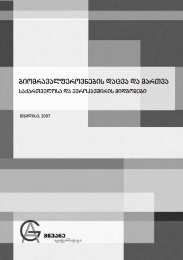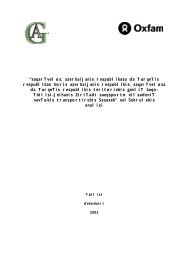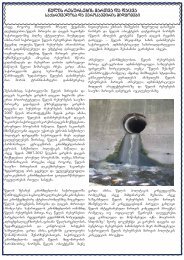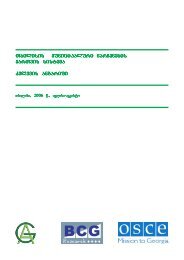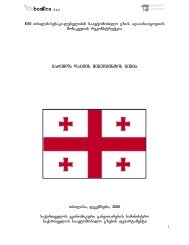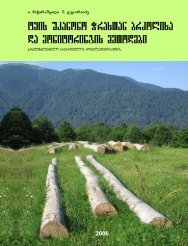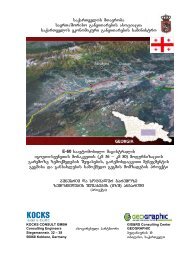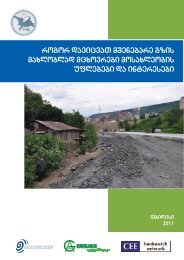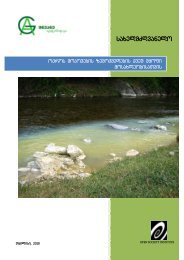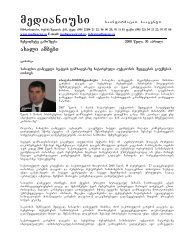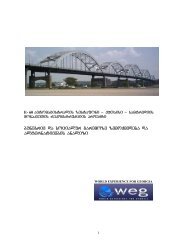Part I
Part I
Part I
You also want an ePaper? Increase the reach of your titles
YUMPU automatically turns print PDFs into web optimized ePapers that Google loves.
Draft Black Sea Regional Transmission Project ESIA<br />
of-way. Helicopter landing/staging pads may need to be constructed in rugged terrain where<br />
helicopters may be used for construction activities.<br />
2.1.2.5 Installation of Conductors (Transmission Lines)<br />
In most locations, there are no line conductors between the existing towers; however, line<br />
conductors and ground conductors are present in some locations. GSE will evaluate<br />
existing conductors to determine if they are still usable. It is anticipated that most, if not all,<br />
of the line and ground conductors used will be new.<br />
Based on the type and size of conductors used in existing 400kV and 500kV systems in<br />
Georgia, the following conductor sizes will be used to maintain uniformity in operation and<br />
maintenance practices, including maintaining optimum spare parts inventory:<br />
<br />
<br />
<br />
3xAC 400/51, 3XAC 500/64 aluminum conductor steel reinforced (ACSR) line<br />
conductors per phase for 500kV transmission line.<br />
Two (2) 380/50 square millimeter DIN48204 rated ACSR line conductors for 400kV<br />
transmission line per phase.<br />
Two (2) ground conductors will be provided. One composite fiber-optic overhead<br />
ground wire will be used to serve dual function; optical fiber telecom link and<br />
ground wire on overhead transmission lines and the other will be ACSR. The<br />
optical fiber telecom link are designed with mechanical and electrical<br />
characteristics similar to conventional ground wires.<br />
The ground wires are constructed to protect the electrical line from the effects of short<br />
circuits on the power system and lightning strikes.<br />
Line conductor installations will be accomplished<br />
using two basic techniques. In drivable terrain, the<br />
conductors will be on rollers at the end of a section.<br />
The line conductor will be played out between the<br />
towers using a four-wheel drive vehicle with a<br />
specialized pole that will pull the line conductor<br />
from tower to tower while driving along the right-ofway.<br />
In highly rugged terrain, it is anticipated that<br />
vegetation clearing will be minimal and helicopters<br />
will be used the run the line conductor between<br />
towers. Once the line conductor is played out, it<br />
will be pulled to the required tension to maintain a<br />
minimum clearance requirement of eight meters<br />
over the highest vegetation. Figure 2-6 shows<br />
typical ground-based conductoring. In rugged<br />
terrain where vehicle access is difficult or<br />
impossible, helicopters may be used to place<br />
conductor lines.<br />
2.1.3 Proposed Maintenance Techniques<br />
2.1.3.1 Substations<br />
Figure 2-6. Ground-based<br />
conductoring<br />
Ongoing operations and maintenance at substations will primarily include accessing the<br />
substations by truck or car to monitor and occasionally service equipment and the facilities.<br />
Additional maintenance activities would include landscaping activities such as grass mowing<br />
and regular mechanical weed control around the fences.<br />
19



